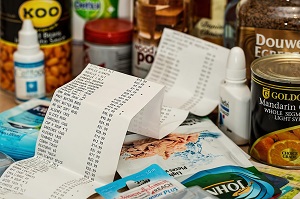![]() Economic Access to Food is a news and information topic monitored and covered by: Prepper Watch – Food Concerns
Economic Access to Food is a news and information topic monitored and covered by: Prepper Watch – Food Concerns
Introduction
In an increasingly unpredictable world, preppers are more than ready for the challenges that lie ahead. While much attention is given to preparing for natural disasters, personal safety, or the breakdown of societal structures, one area that deserves careful consideration is the preparation for economic instability, especially when it comes to food security. Rising food prices and economic instability significantly limit access to adequate nutrition for low-income populations, and the savvy prepper understands the importance of mitigating these risks long before they materialize.
This blog will explore various strategies for preparing for economic access to food, focusing on actions preppers can take to ensure they have access to nutritious food during times of economic hardship.
Understanding the Impact of Rising Food Prices
Economic access to food is deeply influenced by the rising cost of living, particularly in terms of food prices. Several factors can cause food prices to soar:
- Supply Chain Disruptions: Events such as pandemics, natural disasters, or political instability can disrupt global food supply chains, leading to shortages and price hikes.
- Inflation: A general rise in prices across the economy impacts food prices, as transportation and labor costs increase, leading to higher prices at the grocery store.
- Climate Change: Changing weather patterns, droughts, and floods affect crop yields and the ability of farmers to produce food at scale, further driving up costs.
- Global Demand and Scarcity: With increasing global demand and local resource constraints, food prices can skyrocket, especially for staple crops like wheat, rice, and corn.
The impact of these factors is far-reaching. Low-income families are often the hardest hit, with access to food becoming a growing concern. As preppers, the goal is not only to be self-sufficient but to prepare for times when the economic access to food might be severely restricted.
Stockpiling and Storing Food for Economic Instability
One of the most common and crucial strategies for preppers is food stockpiling. While this might sound simple, stockpiling requires careful planning and selection of items that will provide long-term nutritional value and last for extended periods.
Long-Term Storage Staples:
- Canned Goods: Canned beans, meats, vegetables, and soups are excellent choices because they have a long shelf life, are nutritious, and can be consumed with minimal preparation.
- Rice and Grains: Brown rice, white rice, quinoa, and oats are excellent staples that provide carbohydrates and essential fiber. They are easy to store and offer flexibility in meal preparation.
- Freeze-Dried Foods: Freeze-dried meals and snacks are lightweight, compact, and have long shelf lives. These are excellent for emergency situations where space and weight are concerns.
- Dehydrated Vegetables and Fruits: While not as nutrient-dense as fresh produce, dehydrated fruits and vegetables can provide essential vitamins and minerals and can be easily added to various meals.
- Powdered Milk and Protein: If you are concerned about protein and calcium, consider storing powdered milk or protein powder. These can serve as nutrient-rich additions to your food supply.
The key to successful food storage is choosing items that provide balanced nutrition. Additionally, rotate stock frequently to ensure you are consuming older items and replacing them with fresh stock before they expire.
Home Gardening for Self-Sufficiency
If you’re serious about preparing for economic instability, growing your own food is one of the most effective and empowering solutions. Whether in a small backyard, urban space, or rural homestead, home gardening allows you to produce fresh vegetables, herbs, and even fruits year-round.
Key Benefits of Home Gardening:
- Cost-Effective: A garden helps offset the rising costs of grocery bills and reduces dependence on external food sources.
- Nutrient Density: Freshly grown food can be more nutrient-dense than items purchased from the grocery store, as they can be harvested at their peak ripeness.
- Sustainability: Growing your own food reduces your carbon footprint and reliance on industrial agriculture, which is vulnerable to economic disruptions.
What to Grow:
- Vegetables: Start with crops that are easy to grow and have high yields, such as tomatoes, lettuce, carrots, and beans.
- Herbs: Herbs like basil, oregano, thyme, and parsley are easy to grow and can be stored for winter use by drying them.
- Fruit Trees and Bushes: If you have space, consider planting fruit trees like apple, pear, or citrus, as well as berry bushes. These will provide food in the longer term.
- Root Vegetables: Potatoes, onions, and garlic are hardy crops that store well over the winter months.
For those without much space, container gardening or vertical gardening offers an excellent solution, allowing preppers to grow food in smaller areas like apartments or balconies.
Foraging and Wild Edibles
In times of economic instability, many preppers turn to foraging as a means of supplementing their food supply. Foraging offers access to free, wild food that can be found in forests, fields, and even urban areas. Knowledge of local wild edibles is an essential prepper skill that can significantly enhance food security.
Common Wild Edibles to Forage:
- Berries: Blackberries, raspberries, and blueberries can be found in many areas, especially in the late summer and early fall.
- Nuts: Acorns, walnuts, and hazelnuts are often available in forests or woodlands, providing an excellent source of healthy fats.
- Wild Greens: Dandelions, wild garlic, and nettles are all highly nutritious and widely available in fields or along roadsides.
- Mushrooms: If you have experience and knowledge, foraging for wild mushrooms can provide an excellent source of protein.
While foraging can be a valuable resource, it’s important to understand local flora and fauna thoroughly. Mistaking a poisonous plant for an edible one can lead to serious health risks.
Raising Livestock for Protein
For preppers with the space and resources, raising livestock provides a sustainable way to secure a source of protein, which can be critical during times of economic hardship. Animals such as chickens, goats, and rabbits are relatively easy to care for and can provide ongoing resources for meat, eggs, and milk.
Considerations for Raising Livestock:
- Space: Ensure you have enough space for the livestock to graze, exercise, and be properly housed.
- Feeding: Be prepared with a plan for feeding the animals, especially during periods of scarcity when feed may be more expensive.
- Care: Learn the necessary skills for caring for animals, including their health, breeding, and butchering.
- Eggs and Dairy: For chickens and goats, providing eggs and milk can help offset grocery costs and ensure a steady source of nutrition.
Raising livestock can be a rewarding and effective way to prepare for economic disruptions, but it requires careful planning, knowledge, and commitment.
Preserving Food for Long-Term Storage
Food preservation is another key component of prepping for economic access to food. By preserving food, you can extend its shelf life and ensure that you have a stockpile of nutritious options when fresh produce or meats are unavailable or too expensive.
Common Food Preservation Methods:
- Canning: Preserving fruits, vegetables, and meats in jars using heat to create a vacuum seal. Canning is an excellent way to store a variety of foods for long-term use.
- Freezing: Freezing fruits, vegetables, and meats can preserve their nutritional value and extend shelf life. Ensure you have a reliable power source if you plan to freeze large quantities.
- Drying: Dehydrating food removes moisture, preventing the growth of bacteria and fungi. You can use a dehydrator or oven to dry fruits, vegetables, and meats, creating lightweight, long-lasting food items.
- Fermentation: This method is ideal for vegetables like cabbage (for making sauerkraut) or cucumbers (for pickles). Fermented foods provide both nourishment and beneficial probiotics.
Best Foods to Preserve:
- Tomatoes: Canned, dried, or made into sauces, tomatoes are a prepper staple.
- Fruits: Apples, peaches, and berries can be canned or dried.
- Meats: Meats can be canned or freeze-dried for long-term storage.
By learning various food preservation methods, you can ensure that you have a steady, affordable food supply no matter the economic situation.
Alternative Food Sources and Bartering
In times of economic hardship, food shortages may lead to bartering. Building a food supply that is not only sustainable but can also be used for trade is a smart strategy. Bartering can provide access to foods or goods you might not be able to grow or store yourself.
Items to Consider for Bartering:
- Seeds: Heirloom seeds are highly valuable for barter, as they can be used to grow future crops.
- Canned Goods: Non-perishable food items like canned vegetables or meats are valuable in a barter economy.
- Livestock: In some cases, livestock can be used for bartering, either as a direct exchange or for their products (eggs, milk, etc.).
- Survival Gear: If you have extra equipment like tools, knives, or tactical gear, these can also serve as valuable barter items.
By diversifying your stockpile with items that could be useful for trade, you enhance your long-term food security, even if the traditional economic system collapses.
Budgeting and Shopping Smart
Even with a well-stocked pantry and garden, preppers also need to be mindful of their budget. Smart shopping, price tracking, and budgeting allow preppers to purchase essentials at a lower cost, keeping food access stable during times of economic uncertainty.
Tips for Smart Shopping:
- Buy in Bulk: Purchasing staples like grains, beans, and rice in bulk can save money and ensure long-term food availability.
- Use Coupons and Discounts: Take advantage of discounts, sales, and coupons when purchasing non-perishable items.
- Plan Meals: Planning meals around what is on sale or in season can help reduce waste and cut costs.
A solid food strategy involves not just preparing your pantry but managing your budget effectively to ensure that your food supply can weather financial storms.
Conclusion: A Balanced Approach to Economic Access to Food
Economic access to food in times of rising prices and instability is an essential aspect of prepping. By taking a comprehensive approach that includes stockpiling, growing your own food, raising livestock, preserving food, and even bartering, preppers can ensure they are ready for economic disruptions.
In a world where food security is increasingly at risk, being proactive and prepared is not just a necessity, but an opportunity to take control of your future and ensure the survival and well-being of your family.

